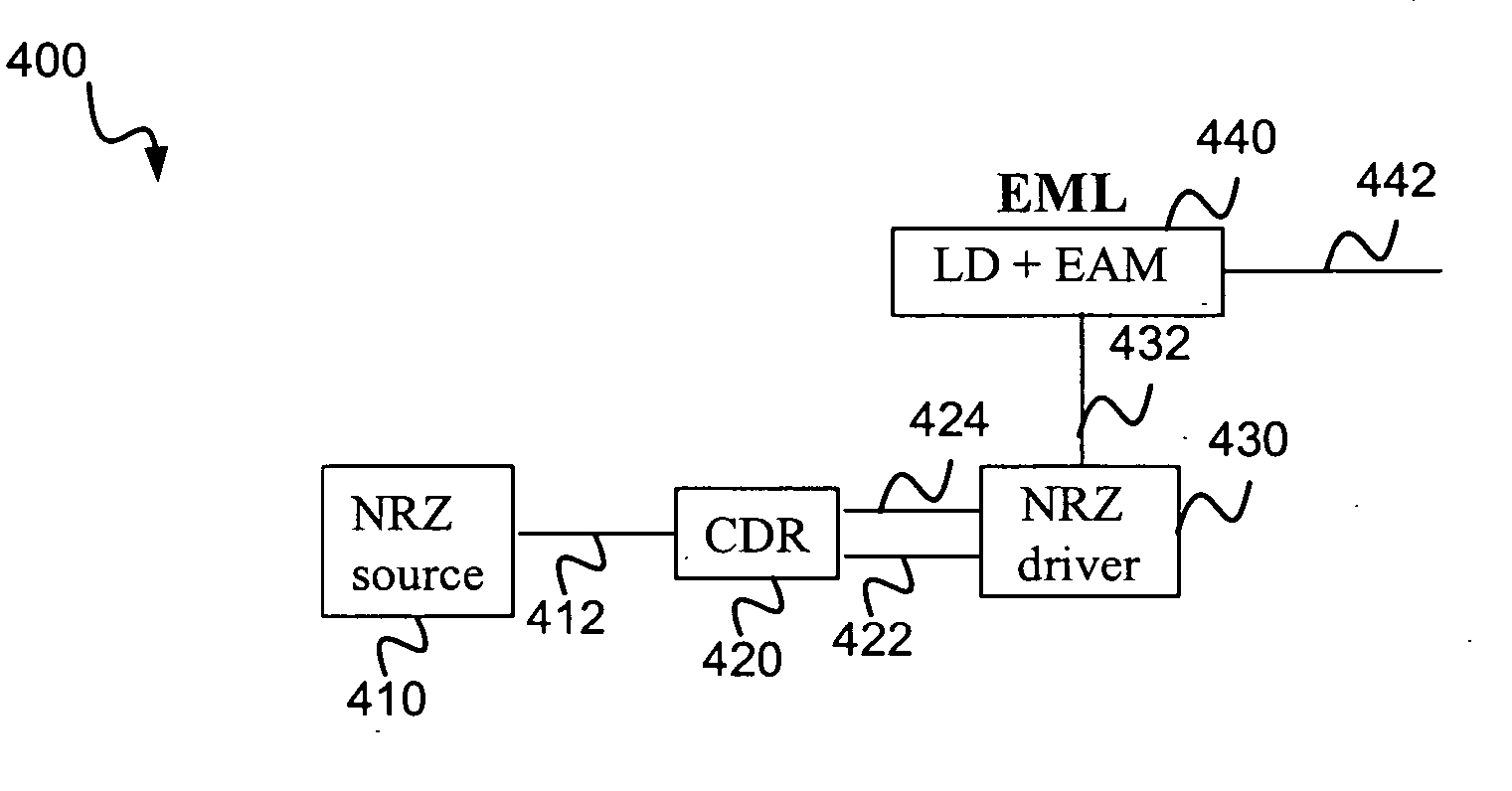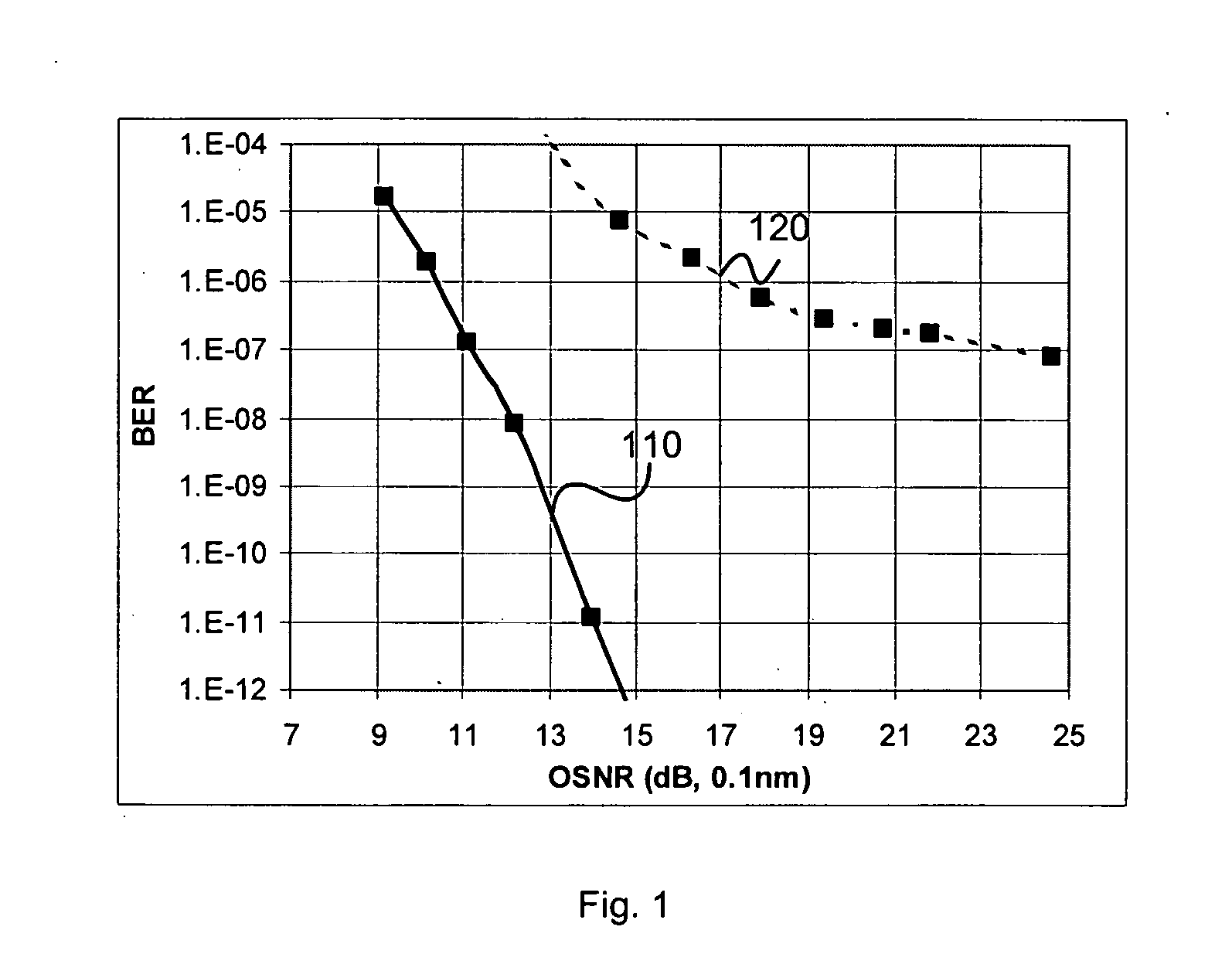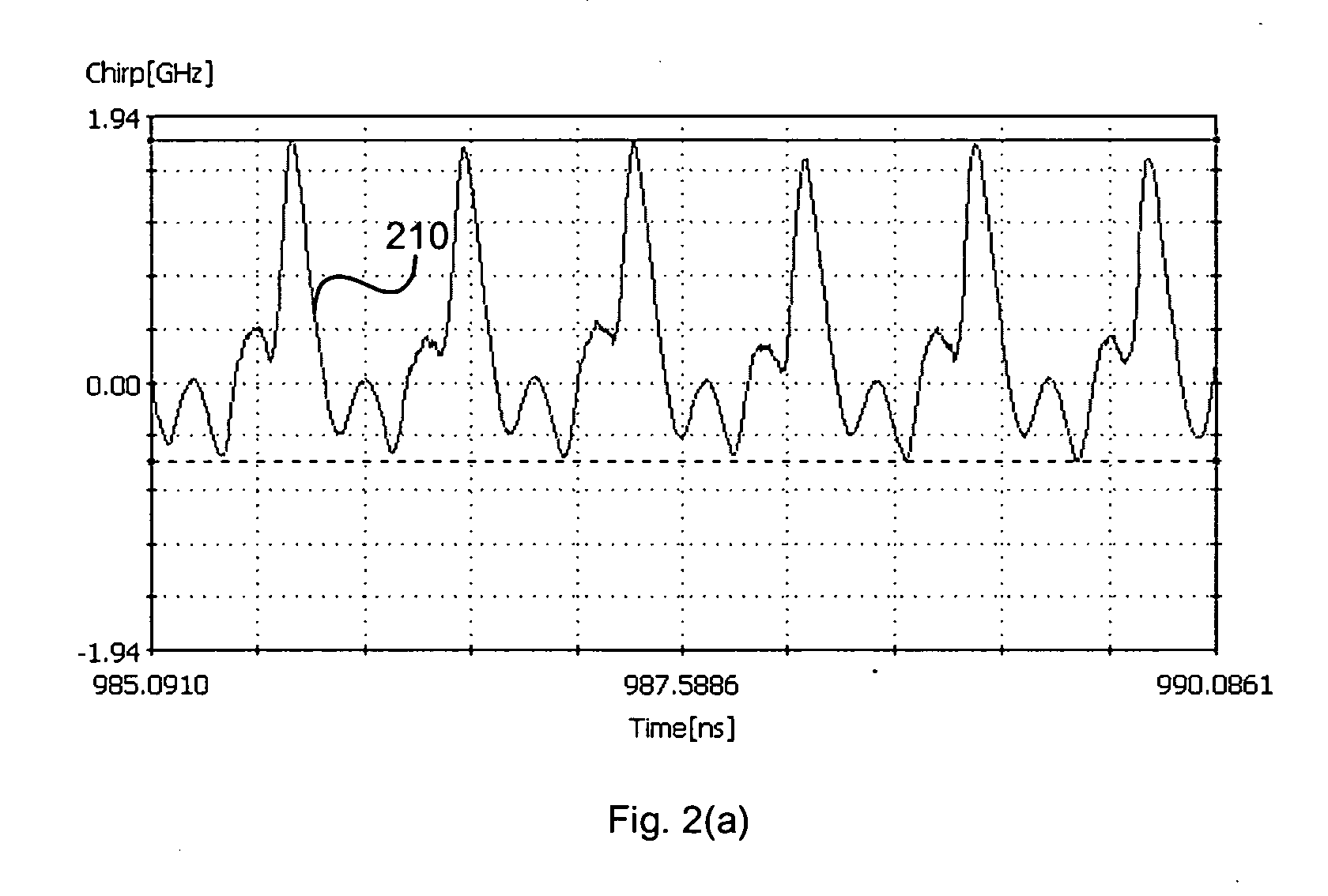Transmission system and method employing electrical return-to-zero modulation
a technology of electrical return to zero and transmission system, applied in electromagnetic transmission, electrical apparatus, transmission, etc., can solve the problems of high cost, large mz modulator, and unfit high-speed long-range optical networks, and achieve the effect of reducing the size and cost of optical transmitters, and improving the performan
- Summary
- Abstract
- Description
- Claims
- Application Information
AI Technical Summary
Benefits of technology
Problems solved by technology
Method used
Image
Examples
Embodiment Construction
[0033] The present invention relates in general to telecommunication techniques. More particularly, the invention provides a method and system using an electroabsorption modulated laser (EML) with electrical return-to-zero (eRZ) modulation. Merely by way of example, the invention is described as it applies to optical networks, but it should be recognized that the invention has a broader range of applicability.
[0034] For a conventional EML, the non-return-to-zero (NRZ) modulation is usually applied. The NRZ modulation is perceived conventionally as being more tolerant to chromatic dispersion than RZ modulation because the NRZ modulation has a narrower spectrum. For example, a chirp-free transform-limited NRZ data pulse can give rise to a spectral width of 0.013 nm at 2.5 Gbps and 1550 nm based on the second moment calculation. Such chirp-free NRZ signal can theoretically tolerate a maximum chromatic dispersion of 18,820 ps / nm at 1-dB power penalty. This maximum dispersion tolerance ...
PUM
 Login to View More
Login to View More Abstract
Description
Claims
Application Information
 Login to View More
Login to View More - R&D
- Intellectual Property
- Life Sciences
- Materials
- Tech Scout
- Unparalleled Data Quality
- Higher Quality Content
- 60% Fewer Hallucinations
Browse by: Latest US Patents, China's latest patents, Technical Efficacy Thesaurus, Application Domain, Technology Topic, Popular Technical Reports.
© 2025 PatSnap. All rights reserved.Legal|Privacy policy|Modern Slavery Act Transparency Statement|Sitemap|About US| Contact US: help@patsnap.com



